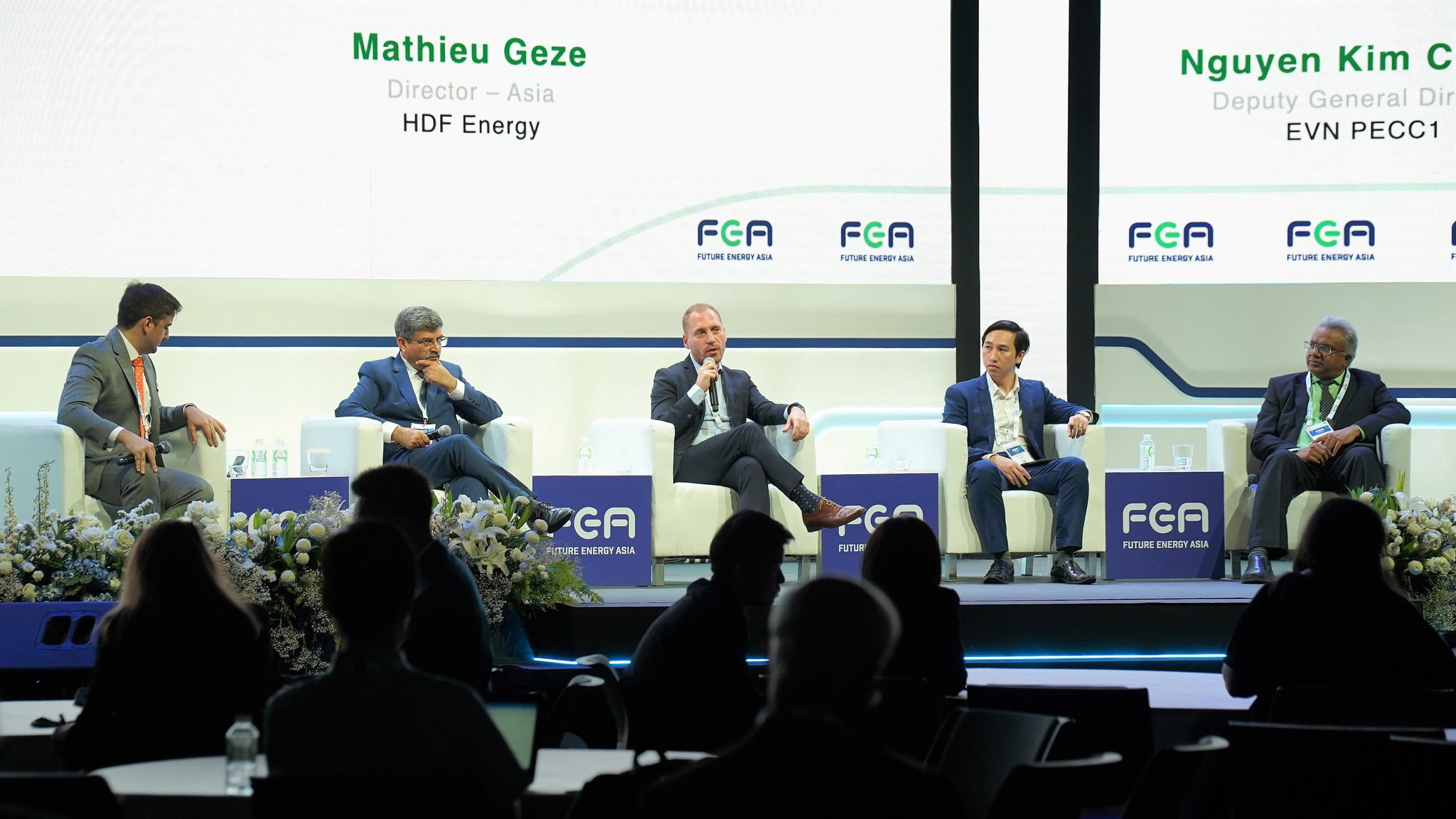
EVNPECC1 Deputy General Director - Mr. Nguyen Kim Cuong participated in the FEA as a speaker.
The FEA continues to welcome Energy Ministers, CEOs, policymakers, and technical experts to analyze critical trends shaping the energy landscape, drive innovations that will forge new pathways in the transition to net-zero, and build partnerships that will bring Asia closer to making energy accessible, secure, and affordable for all countries in the region.
In recent years, there has been a significant increase in activities related to Green Hydrogen research, collaboration, piloting, and testing. This has led to a context of more promising opportunities for both the import and export of Hydrogen as well as the important role of regulatory support for the sector.
Mr. Nguyen Kim Cuong - EVNPECC1 Deputy General Director represented the Company to participate in the meeting with the theme "Realizing the global hydrogen economy: Integrating policies and standards in the hydrogen value chain" as one of five keynote speakers. The remaining speakers of the session were industry experts such as Mr. Patrick Cooper Diaz-Ufano (Hydro Expert - ARUP Group), Mr. Ashwani Raina (Business Development Manager - Global Green Hydrogen - ACWA Corporation) Power, Mr. Mathieu Geze (Asia Regional Director – HDF Energy Group) and Mr. Deepak Agrawala (Senior Executive Vice President – Avaada Corporation).
Discussing at the meeting, regarding the promotion of public-private partnerships, Mr. Nguyen Kim Cuong said, it is necessary for countries to push up renewable energy projects, and at the same time, develop good policy mechanisms as given below:
- Continue to develop and complete policies to promote the development of renewable energy in order to reduce input electricity costs for Green Hydrogen.
- Each country needs to determine its level of ambition for Hydrogen, outline a roadmap to achieve it and the support needed, and provide a reference point for hydrogen development for private investment and financing. From the national strategy on Hydrogen, laws, regulations, and supporting mechanisms will be gradually evolved. A number of points should be paid attention to from this policy approach such as: The government needs to require the use of hydrogen for the replacement of fossil fuels in the following sectors: electricity, transportation, industry, and thermal power. Financial support is for technology change, R&D, production, and sales of Hydrogen. For example, in Vietnam in 2016-2017, renewable energy has not been paid much attention to, but it aimed to develop about 850 MW in the Power Development Plan (PDP) VII. After the issue of the government's decree on FIT tariff, it has supported wind and solar power generation, as a result of which the energy market has exploded into one of the fastest-growing renewable energy sectors in the world. Currently, the proportion of wind power and solar power accounts for 23 GW in total 76GW, accounting for 25% of the capacity of Vietnam's electricity system.
Mr. Nguyen Kim Cuong also shared: Green Hydrogen development strategy is the right orientation for the future. However, to be able to do this, we need a gradual transition roadmap, which considers the possibility of integrating hydrogen with traditional energy sources. The energy sources used include hydropower, coal-fired power, gas-fired and renewable energy, and nuclear power. In which, coal and gas power sources need to be considered to gradually switch to using green fuels, in avoidance of the use of fossil fuels. In order to take advantage and development, it is possible to study conversion technology using Ammonia and Hydrogen instead of coal and LNG, building a transitional roadmap from now to 2050.
Mr. Nguyen Kim Cuong said: PDP VIII which has just been approved some days ago in Vietnam has given the priority in developing renewable energy sources for the power system. According to the approved roadmap, Vietnam will require 20-year-old coal, gas, and LNG power plants to gradually switch to using ammonia and hydrogen. By 2050, there will be no thermal power plants. Thus, Vietnam will take advantage of old power plants and infrastructure to develop Hydrogen.
The session also discussed important lessons and best practices that can be applied in Asia through lessons learned from international Hydrogen projects. Regarding this issue, Mr. Nguyen Kim Cuong released that in addition to lessons on hydrogen development from practical projects, the most recent lesson can be seen from renewable energy development. The costs of solar photovoltaic (PV) and wind energy have fallen by 80% and 40%, respectively, over the past decade, and these trends are expected to keep declining. Thereby, countries need to implement options such as:
- Normalizing of design, construction, safety, production, supply chain, etc., of green Hydrogen.
- Issuing of policies to support production, procurement, and human resource training to encourage enterprises in technological transition and skill enlargement.
- Policies that enforce energy resources in the power sector to be transformed (replacement of coal, LND, gas by Ammoniac, Hydrogen), transportation (long transportation, cars), and industry (chemicals, steel, thermal) to create a huge market.
- Carrying out large projects with financial support as well as output supports to reduce product prime cost.
- Preparation of water resource usage planning.
In the meeting, speakers also discussed and shared their points of view on the application of advanced technology and international partners so as to have more support on creating the global green Hydrogen economy as well as discovering typical factors and getting valuable knowledge on the Hydrogen in the future.
Participating in this FEA Summit, EVNPECC1 has shown its Company Management Board’s development strategy in the fields of renewable energy, energy storage, and recovering and storing of Hydrogen and Carbon. In addition, it was the opportunity to interact with experts and policy planners so as to gain more value knowledge on the future of the energy sector and, at the same time, discover potential partners and enlarge the market. Thus, this will bring further developing opportunities for EVNPECC1 in the future.